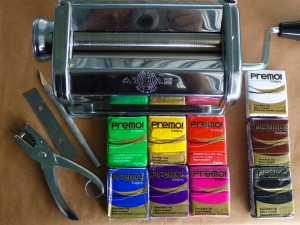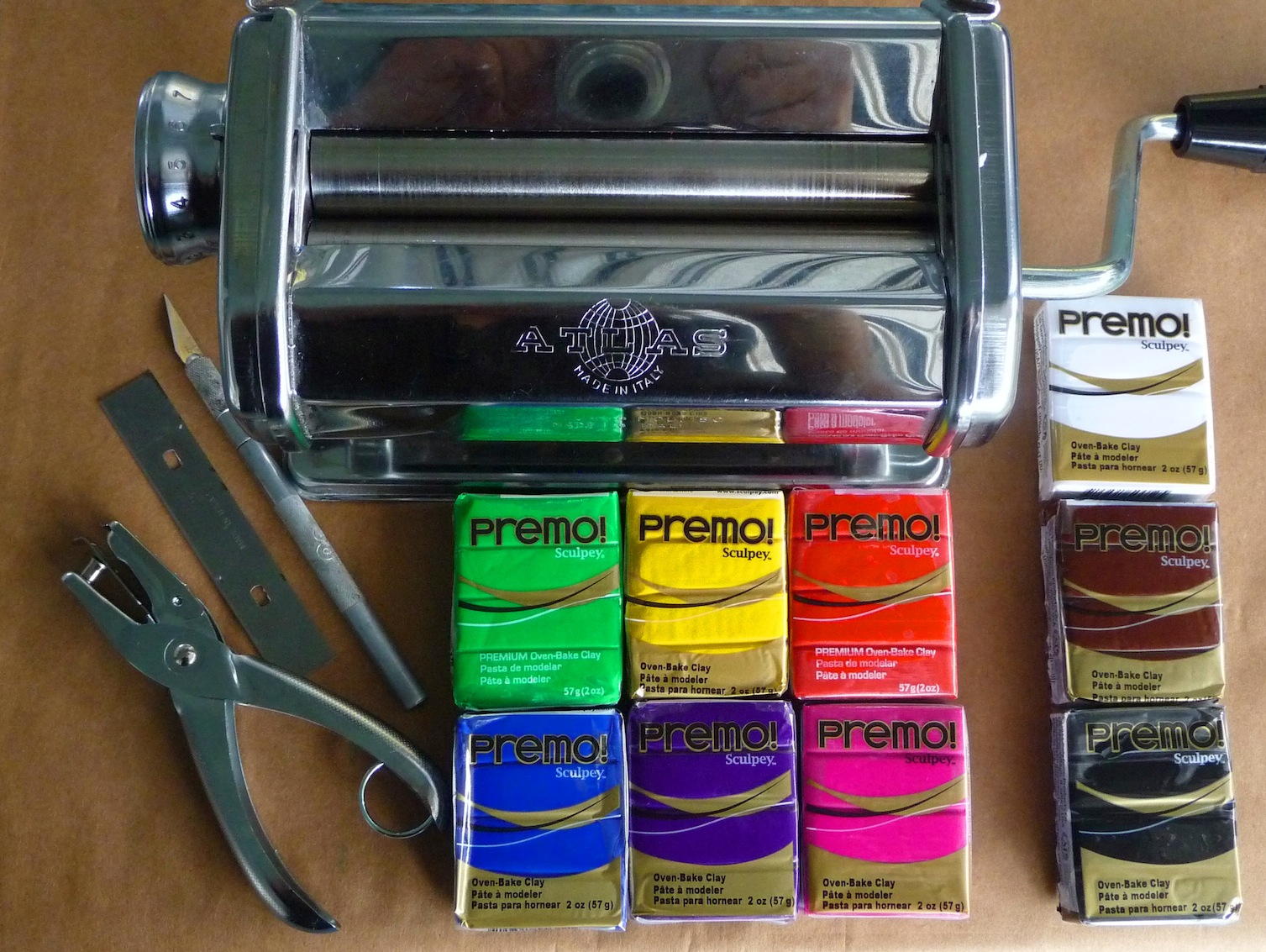 Chapter 3 of Interaction of Color is titled, “Why color paper – instead of pigment and paint.” I’m suggesting we try using polymer clay instead of paper or paint.
Chapter 3 of Interaction of Color is titled, “Why color paper – instead of pigment and paint.” I’m suggesting we try using polymer clay instead of paper or paint.
For the exercises starting next week, you will need a pasta machine, 1/4″ hole punch, blade, # 1 X-Acto knife and nine colors of polymer clay. You will also need some sheets of heavy paper or card stock. A small (approximately 1/2″) square or circle cutter comes in handy if you don’t want to cut out centers using the knife.
I prefer Premo brand for color studies. If you are just starting out in polymer, I recommend buying the following colors:
Cadmium Yellow, Cadmium Red, Fuchsia, Purple, Ultramarine Blue, and Green, White, Burnt Umber and Black. Here are the reasons Albers preferred paper to paint – and my rational for trying polymer instead.
1. Avoids mixing. Albers said that mixing paints is “often difficult, time-consuming, and tiring.” I think one of the disadvantages of taking the standard Albers’ color course is that you do not learn how to mix colors. Its true that mixing colors adds an extra step in the process, but with polymer clay and a pasta machine it can be easy and fast.
2. Avoids discouragement. Mixing failures are avoided and paint is not wasted on mistakes. Even if you will never need to mix colors, knowing how to mix colors is essential to understanding color. Polymer clay is an ideal medium for learning the basics of color mixing. It is accurately measurable and, because it does not dry out, it’s never wasted.
3. Repeated use of precisely the same color. Here Albers calls for a material that does not change in tone, light or surface quality – a material that does not show traces of hand or tool. Properly conditioned with a pasta machine, sheets of polymer clay have the same surface every time.
4. Minimal equipment and cleaner. Albers is looking for a material that is “easier, cheaper and more orderly” than using paints. Using polymer is definitely easier and less messy than paint. If a student was starting from scratch with polymer clay they could purchase all the equipment and clay for the exercises for less than the cost of a medium pack of ColorAid papers.
5. No texture. Again – polymer clay, when it’s properly conditioned, has the same smooth surface every time.
Using polymer instead of paper will be a fun experiment. Next Saturday, we start the exercises with Chapter 4’s classic “to make one and the same color look different.”


Leave a Reply